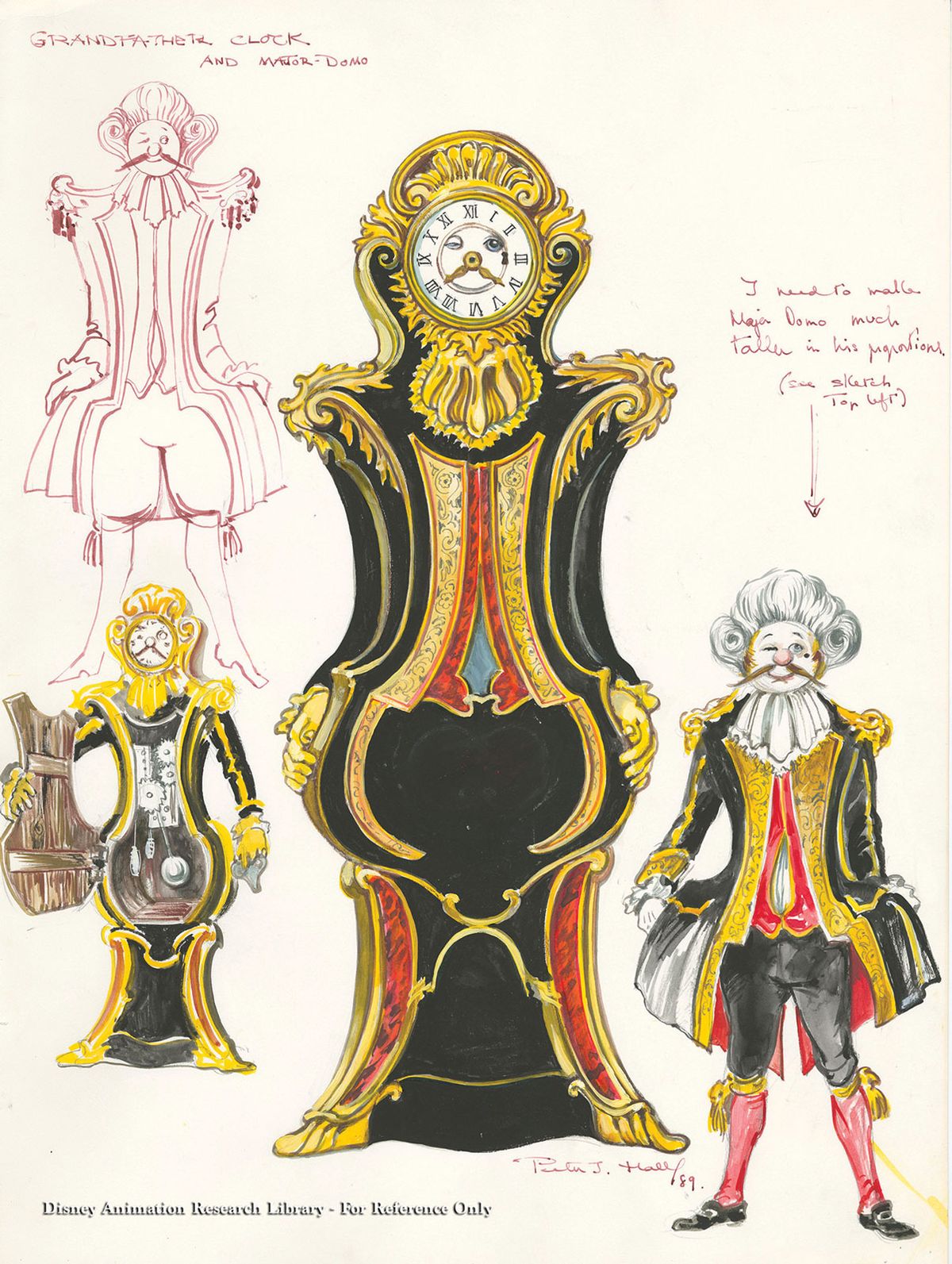Walt Disney can seem as American as apple pie. Chicago-born and Missouri-raised, he was the man who gave the world Mickey Mouse, Disneyland and a corporate behemoth still going strong nearly a century after he and his brother Roy got the ball rolling with their Hollywood cartoon studio. But an exhibition opening this week at New York’s Metropolitan Museum of Art makes the case that Disney had the tastes of a French courtier, finding sources for his films and theme parks in the fancy trappings of the ancien régime.
Seeming to bring the inanimate to life was the stock-in-trade of the European Rococo, whose artisans and designers instinctively blurred the lines between people, animals and things, fashioning gilded candelabra branches that appear to be human arms, porcelain vase handles crafted out of elephant trunks, and caricatured figurines that now look like Disney characters avant la lettre. This is no coincidence, with decades of Disney animators and designers, spurred on by Walt himself, consulting images of 18th-century objects in the course of creating their films and theme parks. The connection is at the heart of Inspiring Walt Disney: The Animation of French Decorative Arts, which comingles 60 pieces of 18th-century European design, including Boulle clocks and Sèvres porcelain from the Met’s own esteemed collection, with 150 production works from the likes of Cinderella and Sleeping Beauty, on loan from the Walt Disney Animation Research Library and other collections.
Wolf Burchard, the associate curator of European sculpture and decorative arts at the Met and organiser of the show, says he has long been interested in Disney’s work and has been actively thinking about how to do the show for five years. He sees provocative parallels between 18th-century France, Europe’s leading power at the time, and mid-20th-century America, in the heady throes of its new-found superpower status. And he finds a kind of kindred passion in the workshops of Bourbon France and the Disney studios, whose shared aim was to produce works that were “a bit of fun”.

A clock by the 18th-century European designer, Boulle, who was admired by Disney Courtesy of the Metropolitan Museum of Art
The show begins with Disney’s own personal discovery of France, which dates to 1918, when he made his way to Europe as a teenage ambulance driver just after the First World War. In 1935, on a European grand tour, he was fêted in France as a genius of the new art of cinema, and he returned from the trip with hundreds of illustrated books and other European source materials that found their way into a plethora of Disney projects, reaching an apogee in 1991’s Beauty and the Beast, an idea of Disney’s dating back to the 1930s, though realised long after his death.
"America looked at French decorative arts first and foremost through Disney"Max Hollein, Met director
The producer Don Hahn, whose connection to the studio stretches back to the 1970s, said he was only aware of the reach of Walt’s Francophilia when he began work on Beauty and the Beast, whose resounding use of anthropomorphism is on display at the Met with concept art related to Cogsworth, the film’s singing-and-dancing pendulum clock. Meanwhile, the Rococo penchant is recalled in objects like the Meissen figurine Faustina Bordoni and Fox (around 1743), depicting an Italian mezzo-soprano and her vulpine keyboard player.
It turns out that Disney has had a place in the Met’s collection since the late 1930s, when the museum acquired The Vultures, a gouache on celluloid from 1937’s Snow White and the Seven Dwarfs. That classic animation cel will indeed get a viewing, but Met director Max Hollein sees Inspiring Walt Disney as essentially a show about “chandeliers, furniture and teapots” rather than a crowd-pleasing blockbuster.
The exhibition reveals “a complex cross-cultural dialogue,” says Hollein, demonstrating how Disney’s influences influenced the US in turn. “A big part of America looked at French decorative arts first and foremost through Disney.”
• Inspiring Walt Disney: The Animation of French Decorative Arts, The Metropolitan Museum of Art, New York, 10 December-6 March 2022; The Wallace Collection, London, 6 April-16 October 2022


